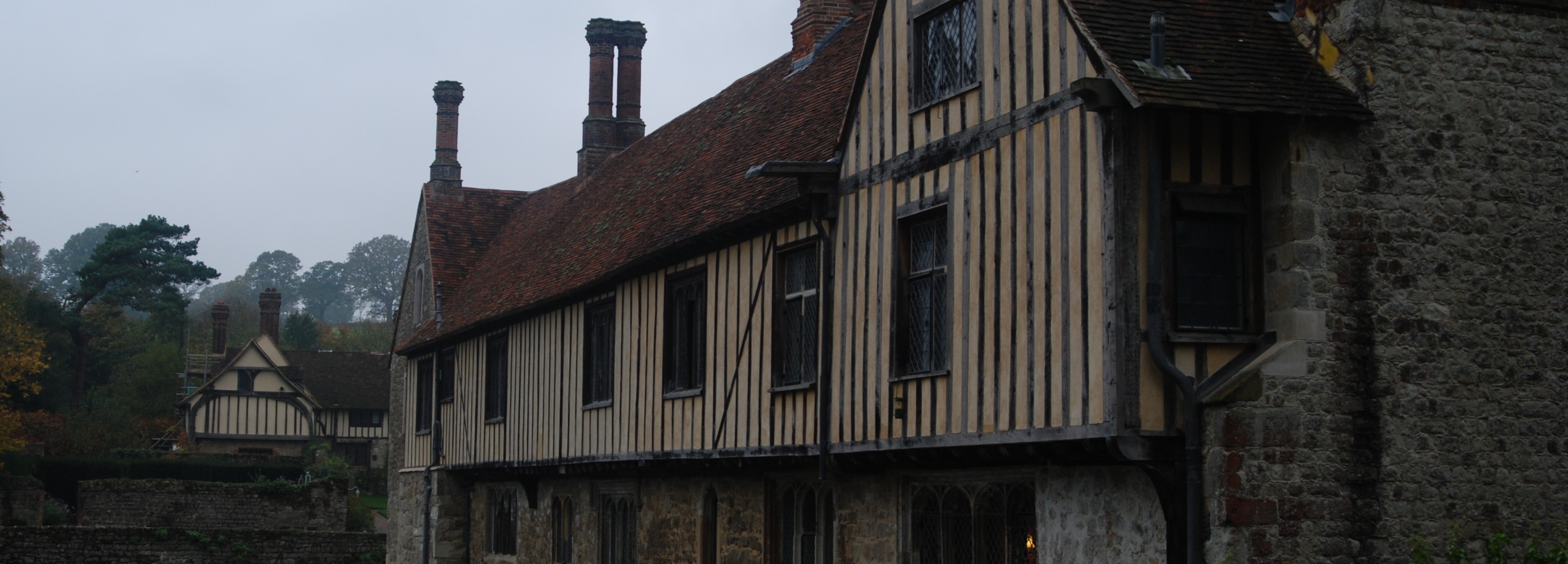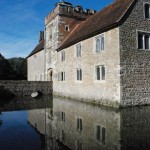Ightham
Background
Ightham Mote’s earliest phase of buildings dates to before 1340. The original building was a water mill purchased by Sir Thomas Couen around 1340. He proceeded to develop the building to include a large open hall, an unusual arrangement of two solars and chapel. These buildings were surrounded by a quadrangle moat. Over the centuries additions were made and Ightham grew to the complex site seen today. Ightham provides a unique opportunity to examine a medieval manor house design and subsequent evolution in later periods.
Originally the home of Sir Thomas Couen from 1340-1374, the Mote then passed into the Haut family during the 15th century. Sir Richard Haut is believed to have built the upper stages of the gate tower and the west and south wings. Following misfortunes of the family, Richard’s son Edward mortgaged the property to Richard Clement in 1521. The Tudor Chapel and the half timbered front of the Oriel Room and Chapel Corridor date to this phase. Eventually Ightham passed to the Selby family who lived there until 1889 when the estate was sold to Thomas Colyer-Fergusson who refurbished the property. In 1951, Ightam was under the threat of being demolished. Thankfully, three local businessmen–John Goodwin, William Durling and William Baldock–purchased the property and saved it from destruction. In 1953, Charles Henry Robinson, an American businessman, purchased Ightham and has since left it to the National Trust. In the last decade Ightham was the subject of an extensive restoration costing the National Trust over ten million pounds. This restoration was the subject of a ‘Time Team Special’. For visitor information, visit the National Trust’s webpage.










Leave a Reply
You must be logged in to post a comment.